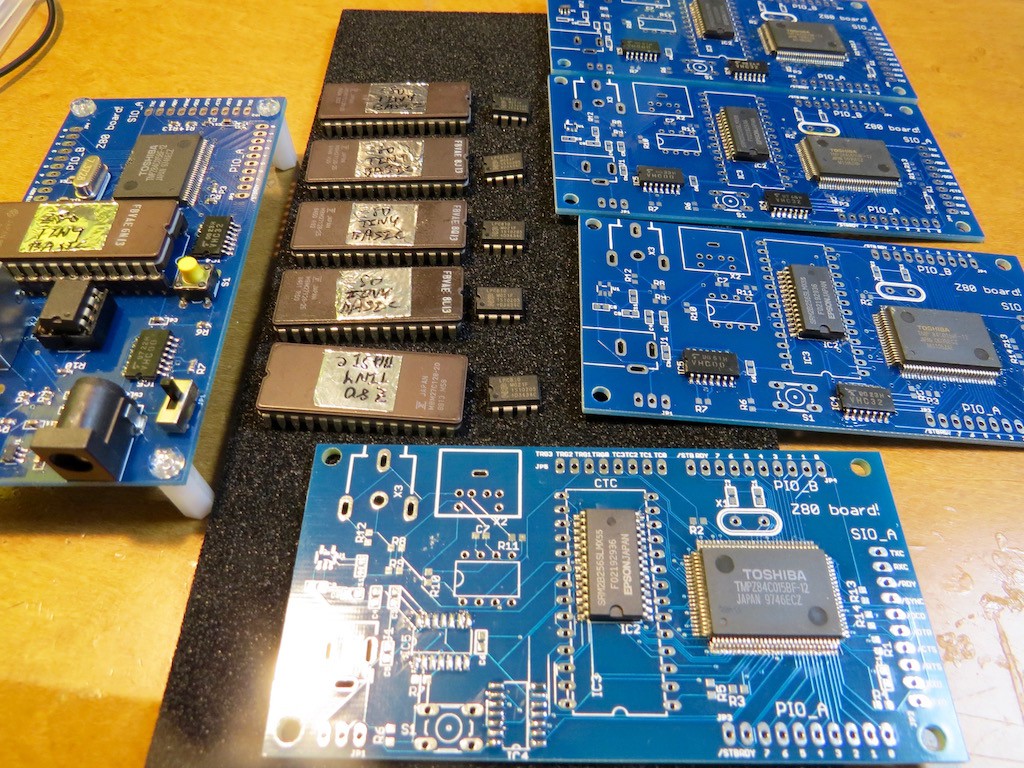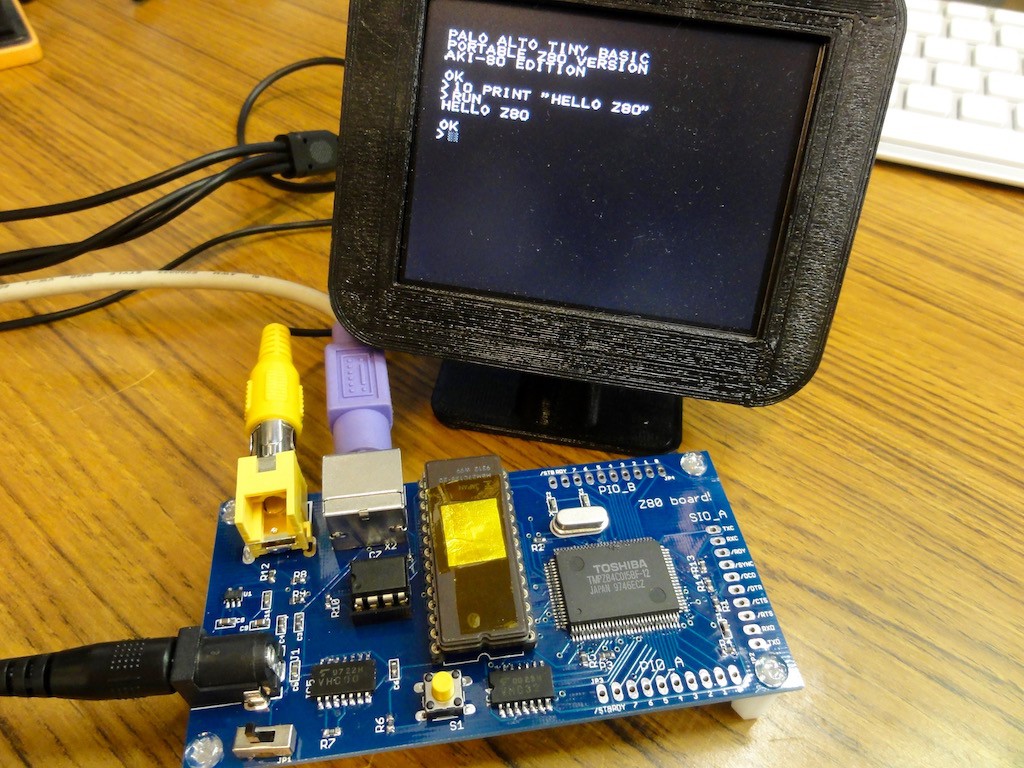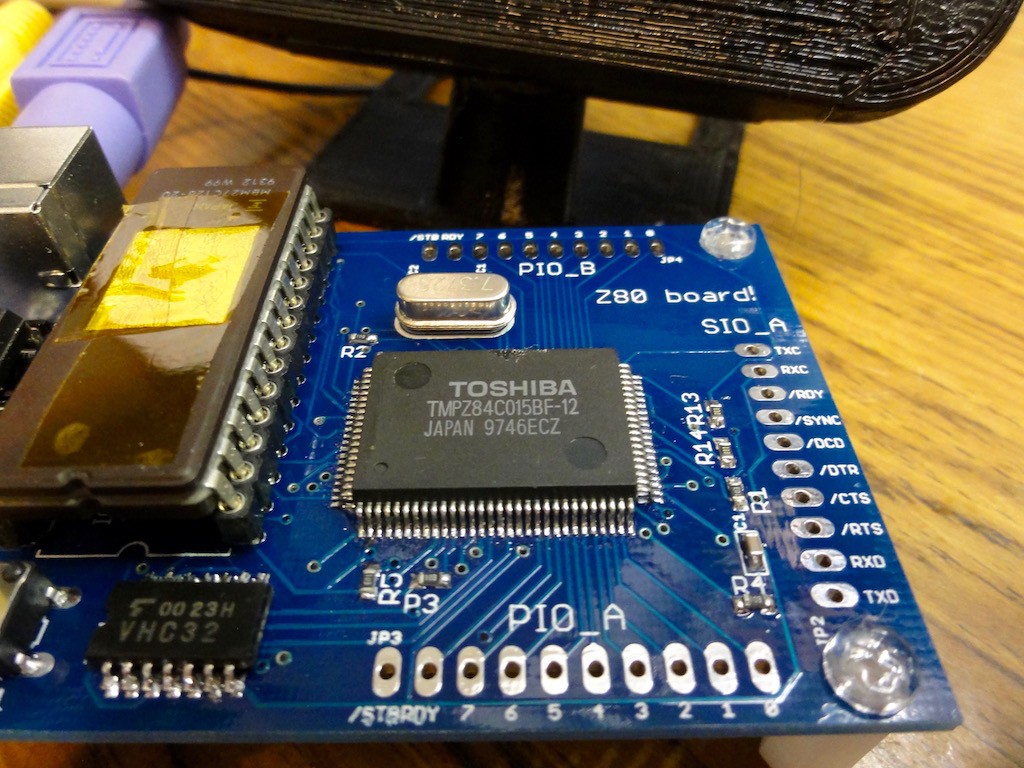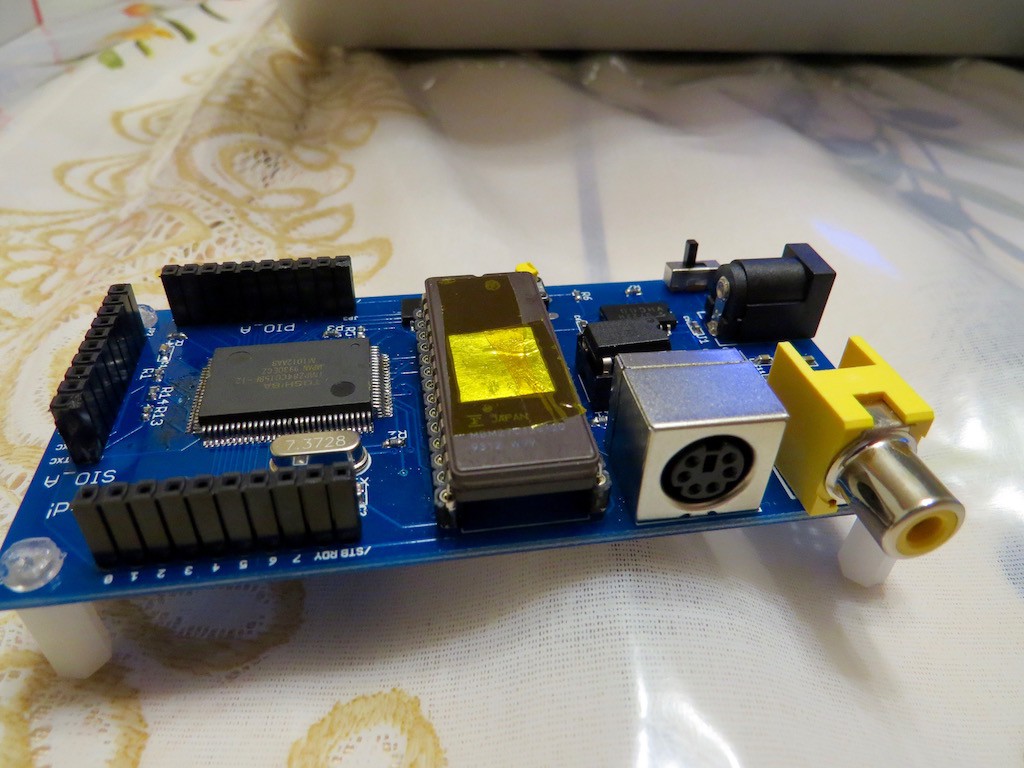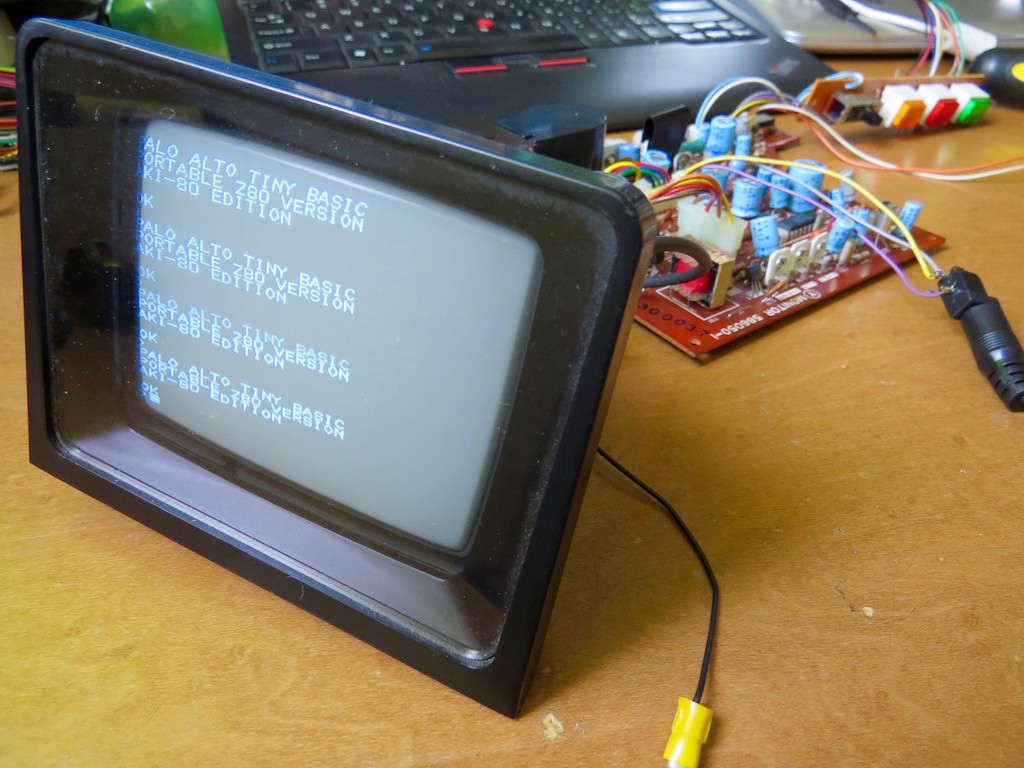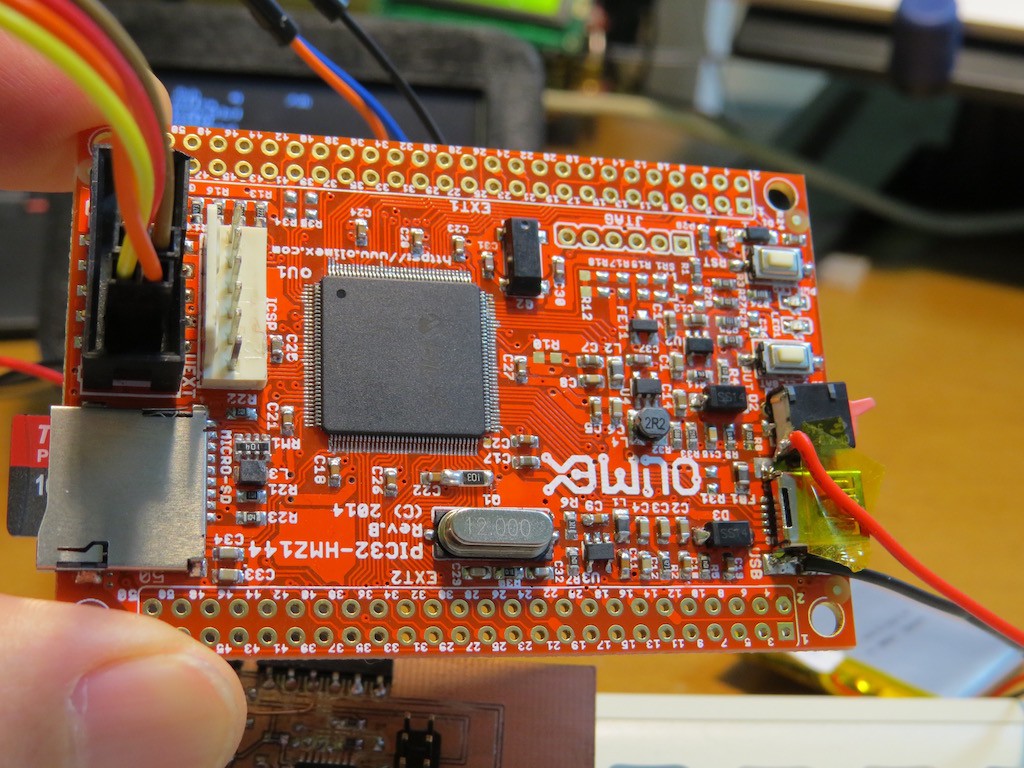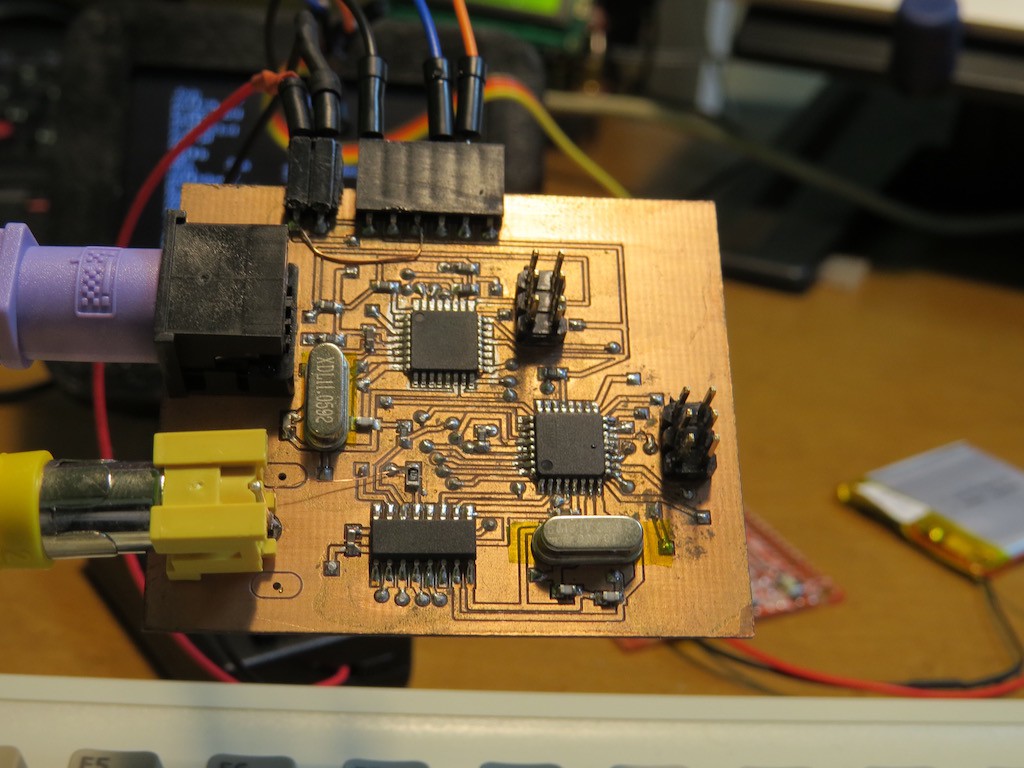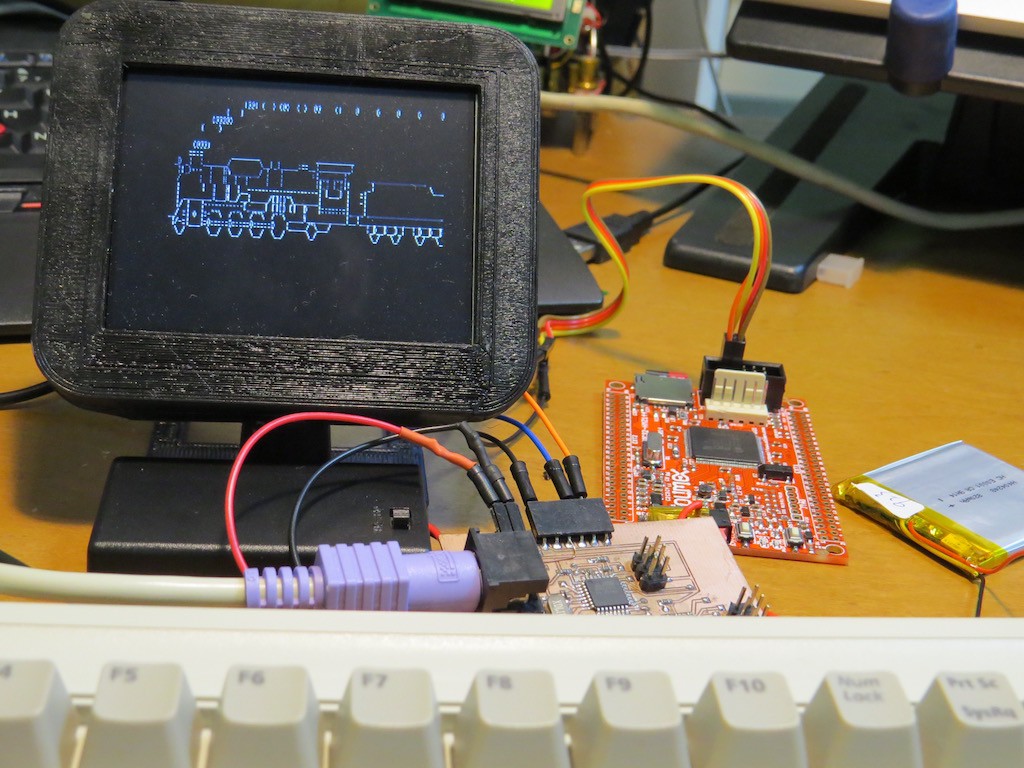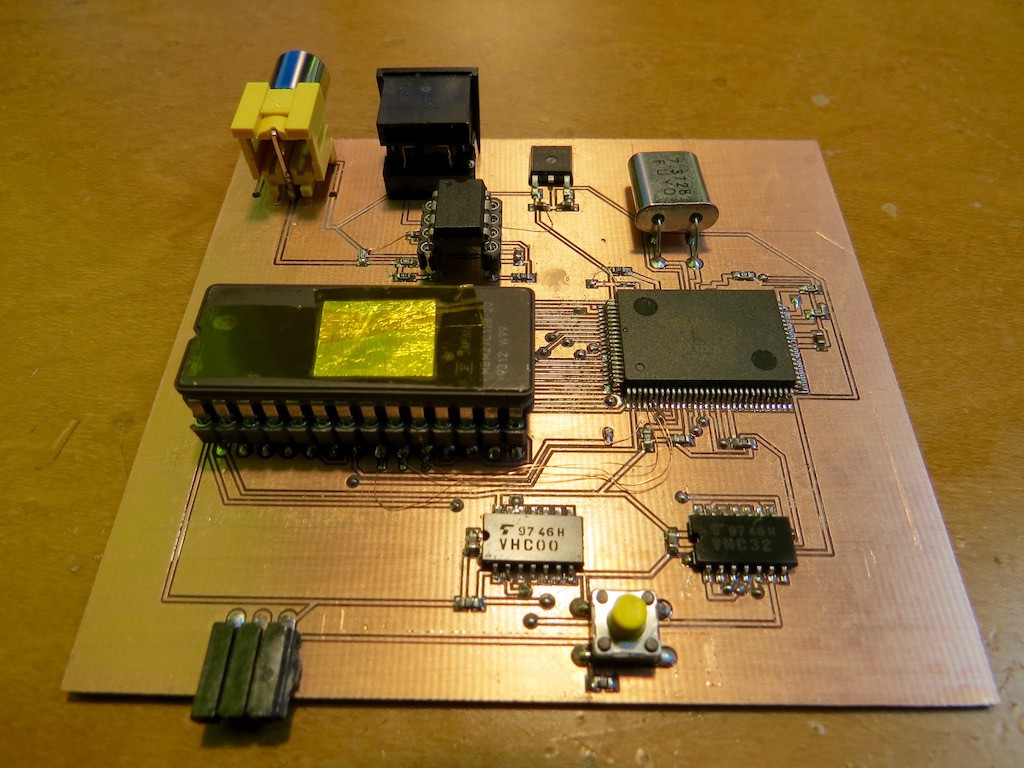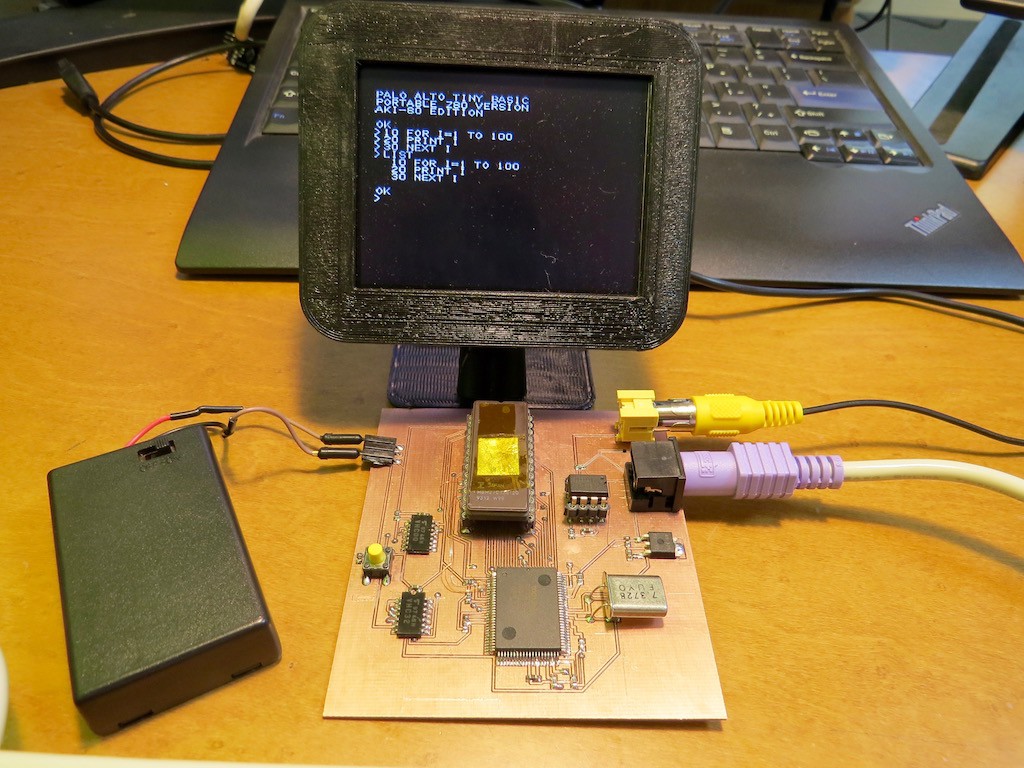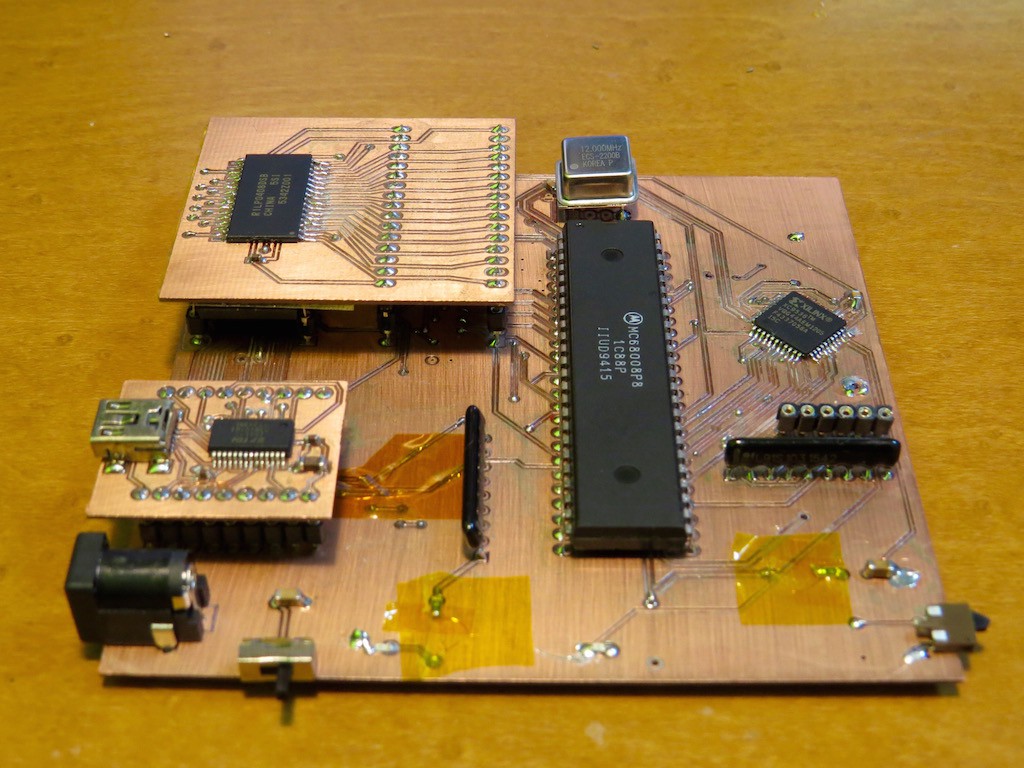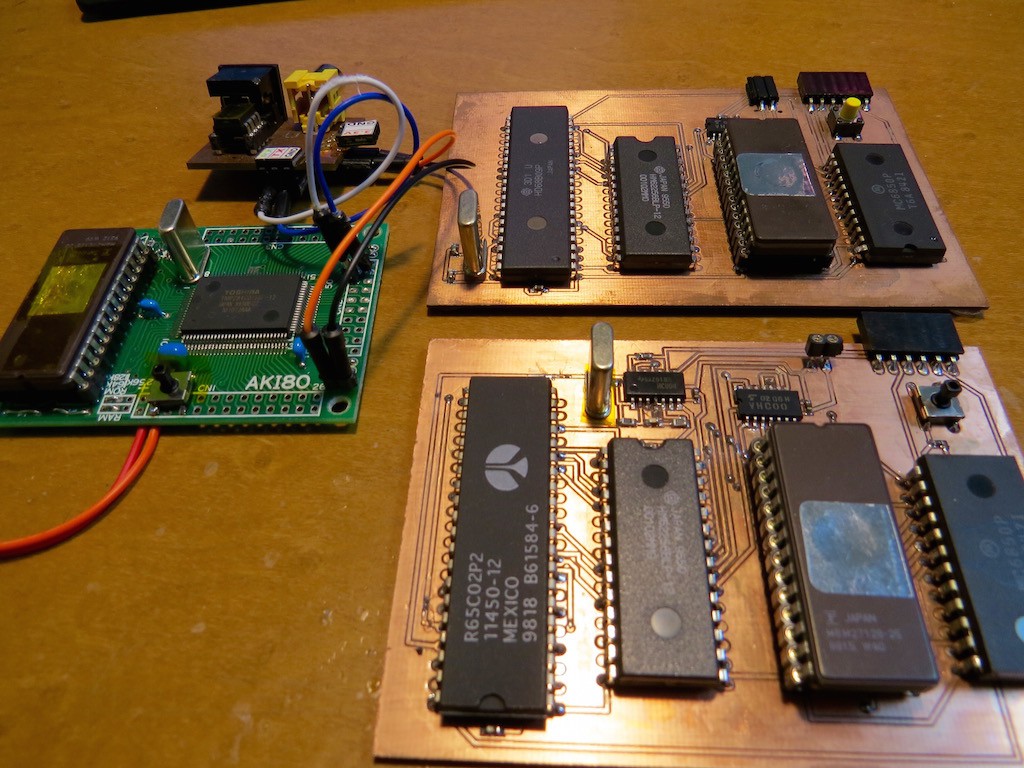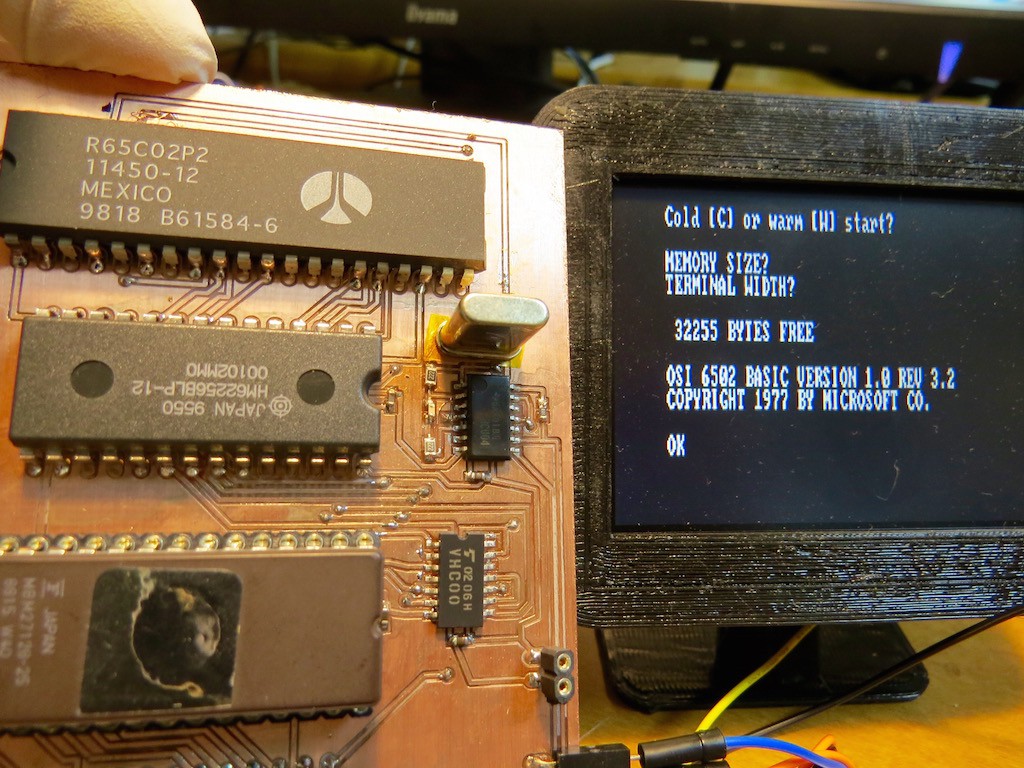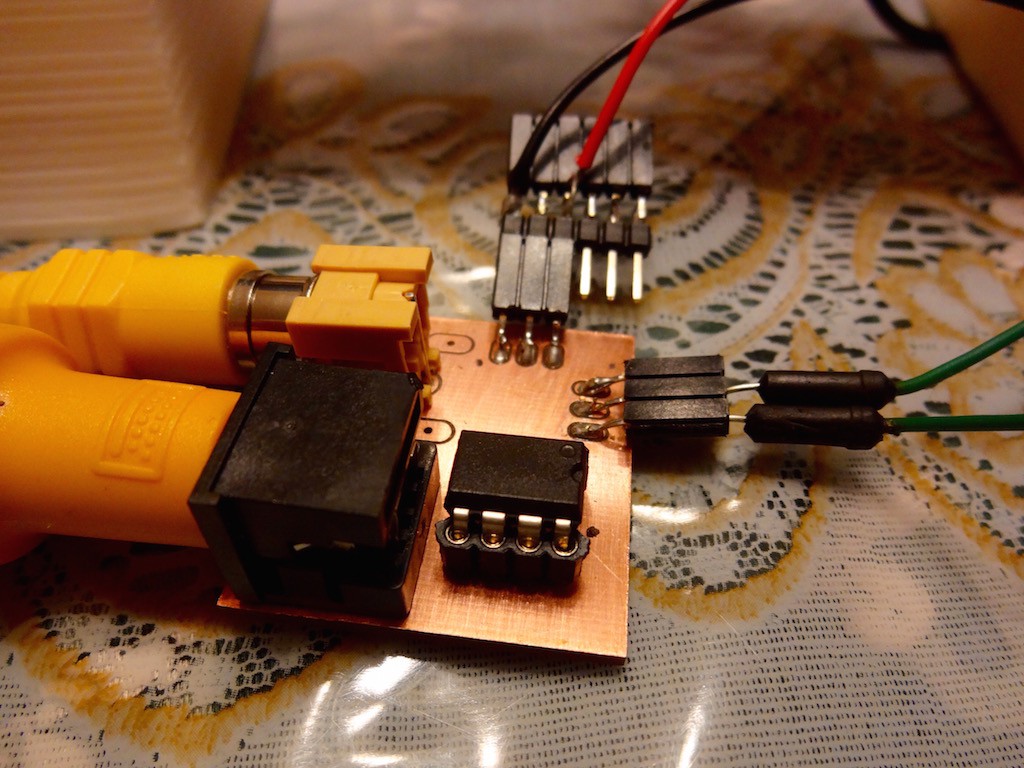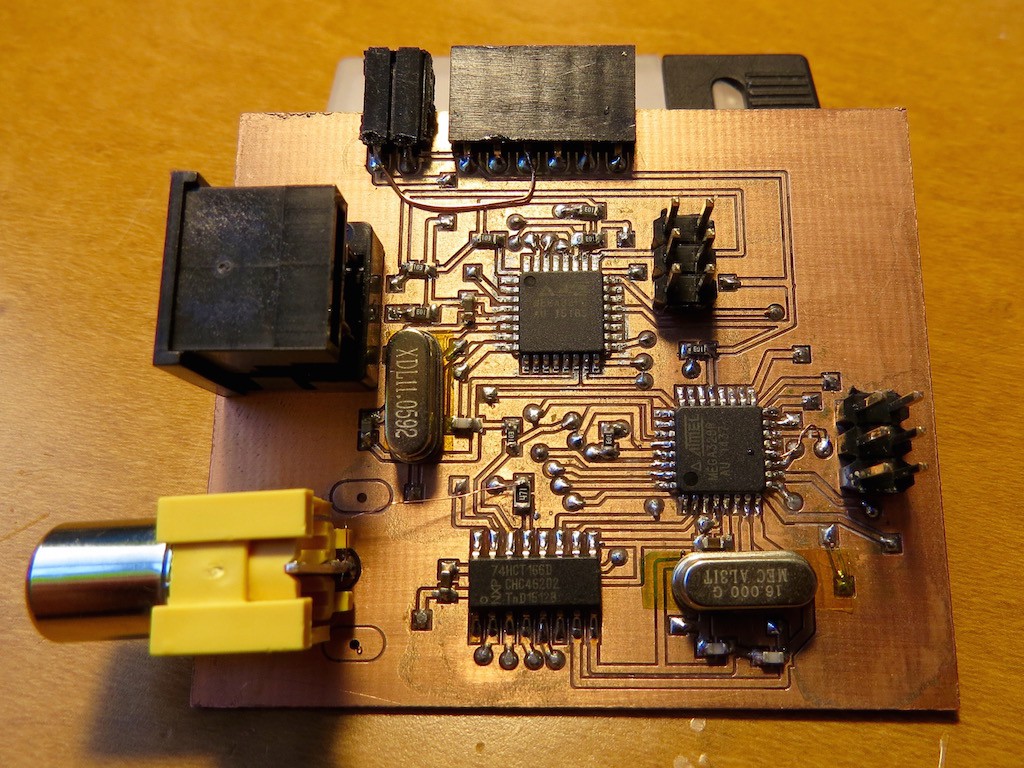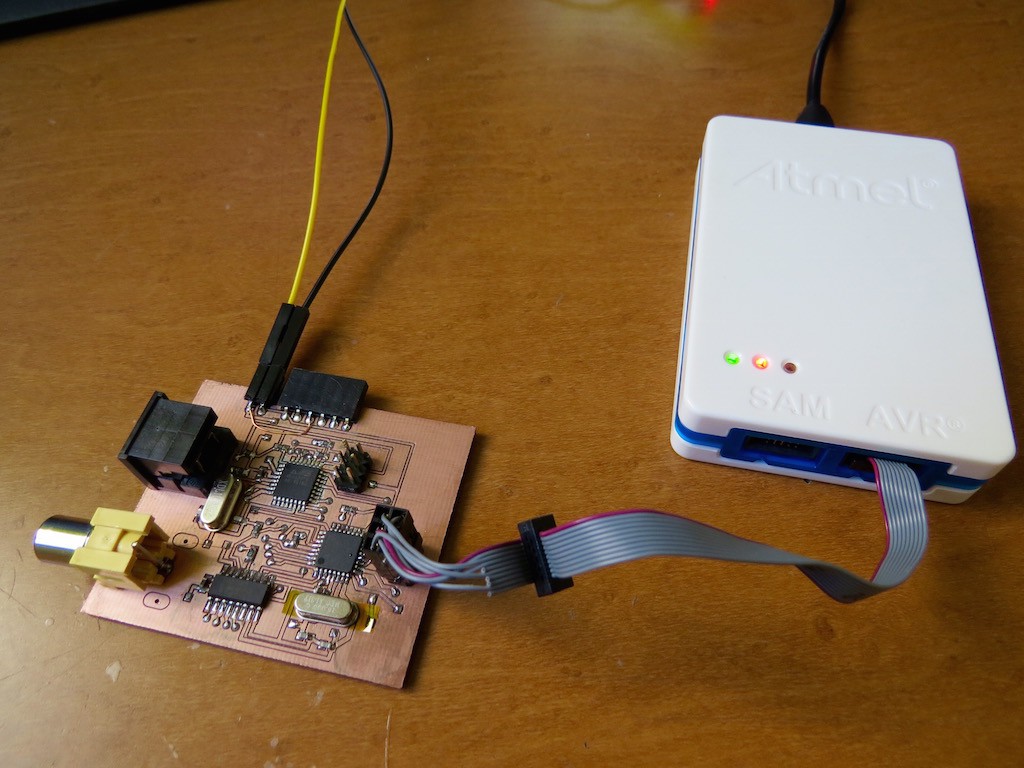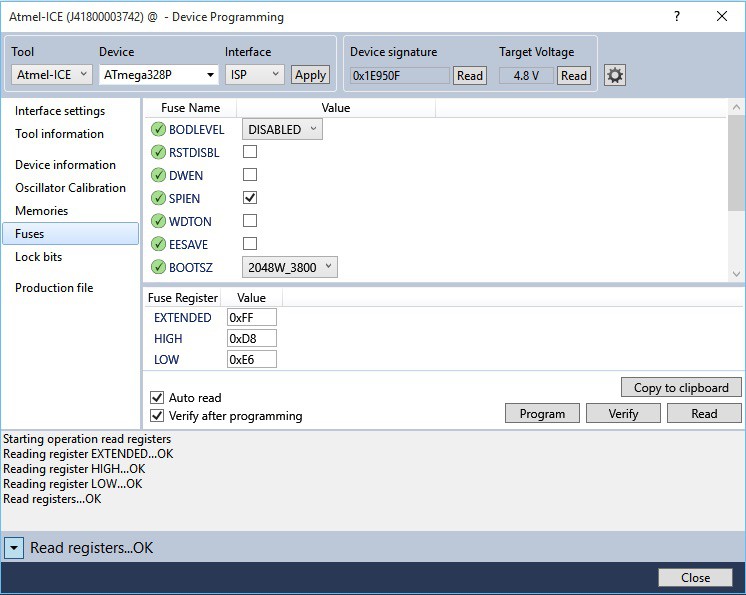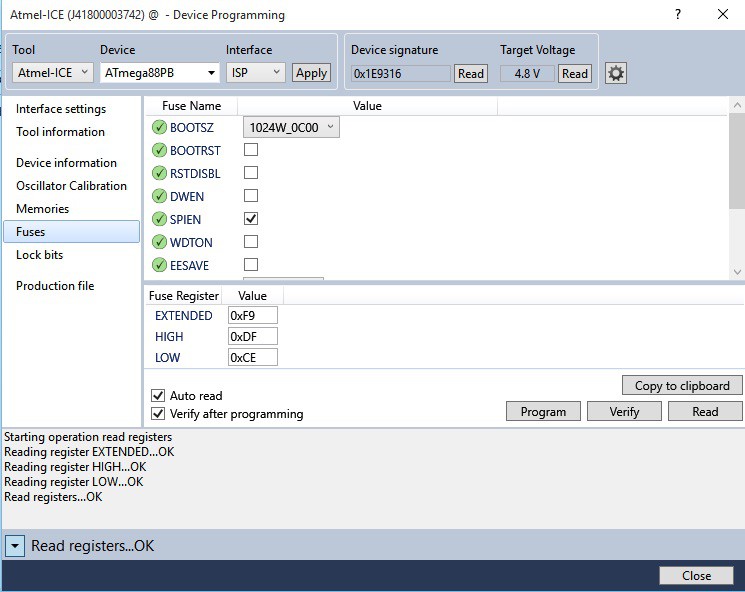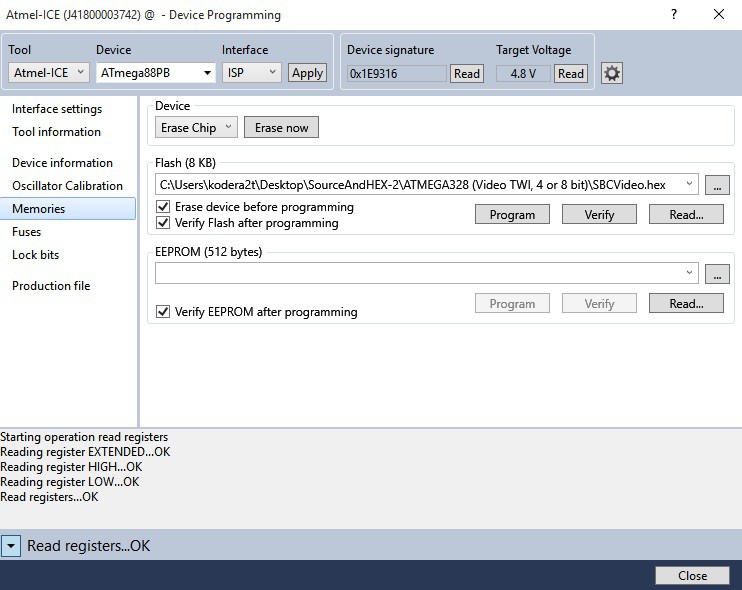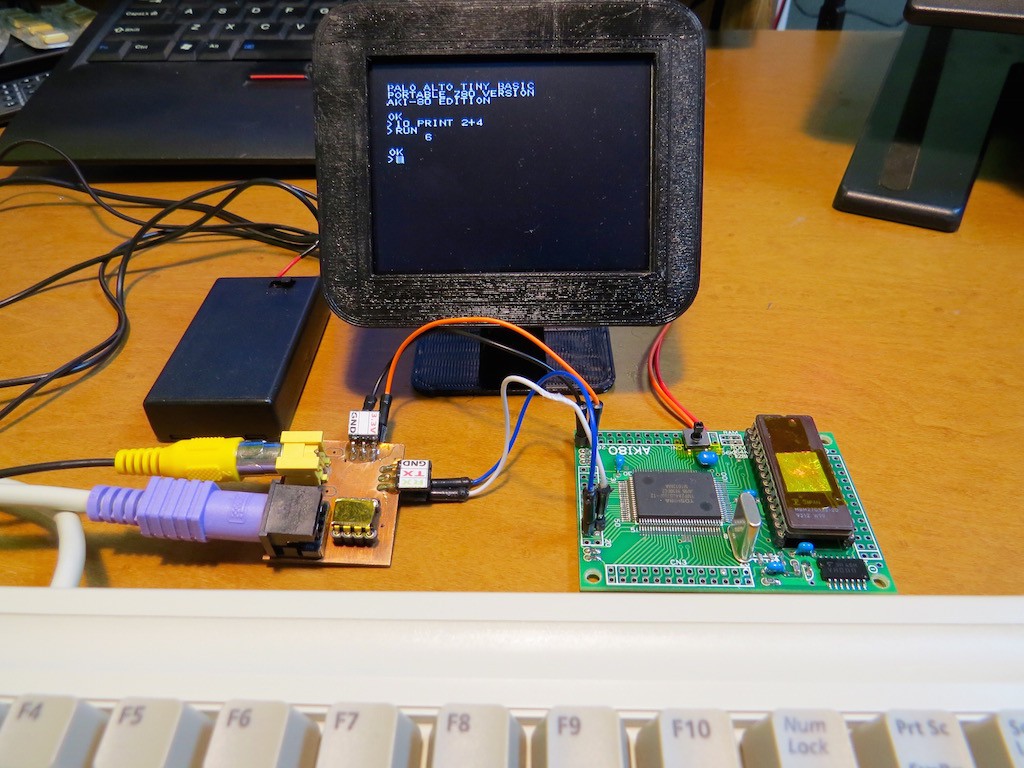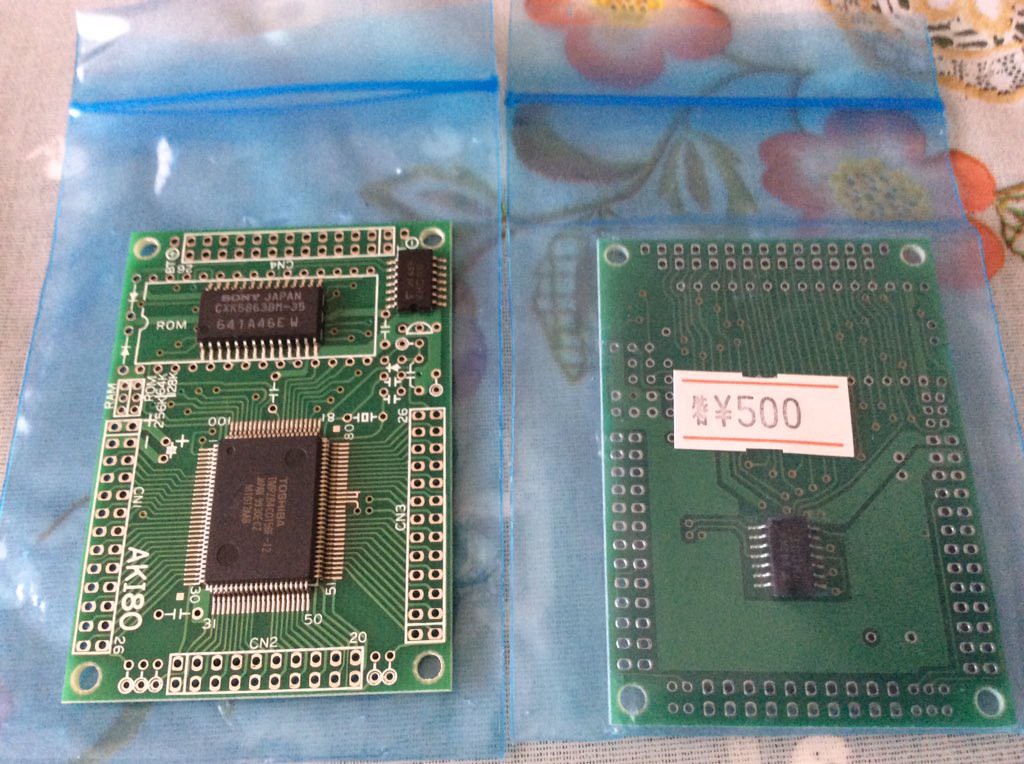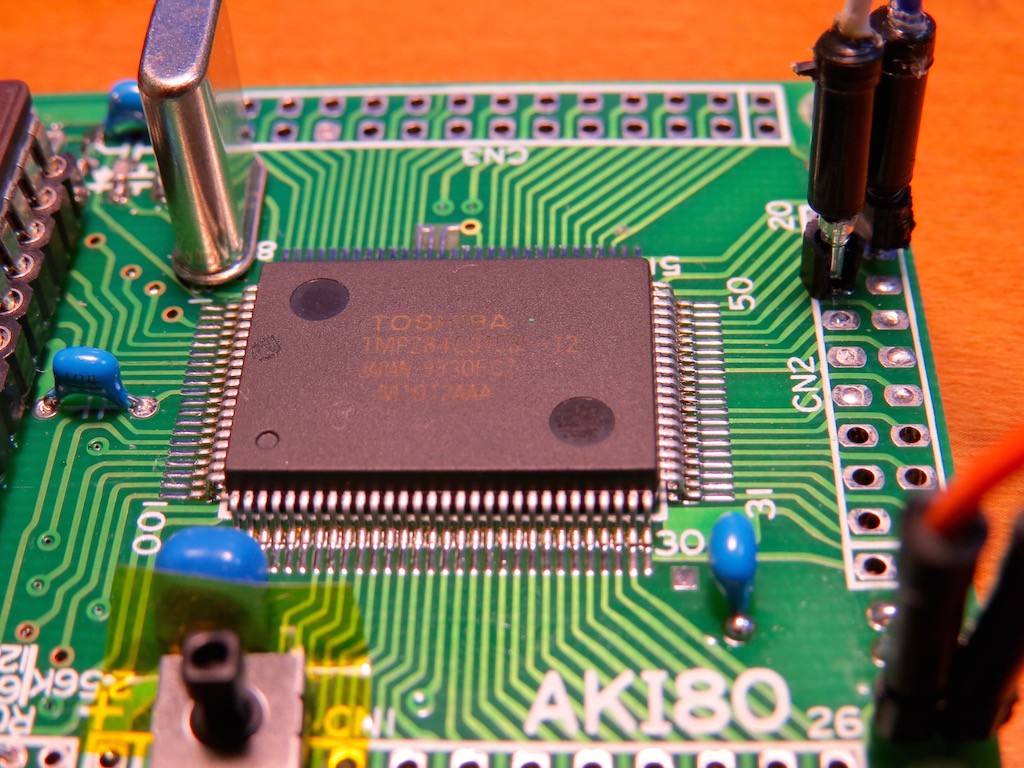-
Tindie kit preparation on going..!
09/25/2016 at 09:43 • 2 comments![]()
I am not sure there are demands, but kit preparation is on going..
Now full assembled Z80 single board computer is sold at my tindie store. It is limited number and don't miss it if some interest!
-
Now it is born. Single Board Z80 computer
09/21/2016 at 04:47 • 0 comments![]()
Now it is born, the single board Z80 computer. The schematic is exactly the same as my previous one, just using PCB service. It has 32kB SRAM on-board (below EP-ROM).
![]()
The main chip is wonderful TMPZ84C015, it is highly composite CPU including two PIO, two SIO, and CTC. The board size is small but it includes,
(1) Z80 CPU
(2) Z80-CTC
(3) two Z80-PIO
(4) two Z80-SIO
(5) Z80-CGC
, and watchdog time just in one chip!!
In my previous board, none of these pins are wired but this board all of functions are accessible. As same as another project, I will send this board as semi-kit at tindie.com. I've purchased around 10 MCUs but I need several preparations (EP-ROM writing, LPC810 firmware writing) and hopefully in a few weeks, it will be on sale. Actual operation can be found in the following movie... Stay tune!
-
New version?
09/19/2016 at 13:01 • 2 commentsDetails will be summarised soon. Stay tune!
![]()
![]()
-
Old-fashioned tiny monochrome CRT for retro computer
06/26/2016 at 02:09 • 0 comments![]()
I got a junk camera surveillance component just by 300JPY. Indeed I had no information of it (just only logo "Kumahira") but I eventually got the connection pinout of this tiny CRT monitor.
![]()
It is tiny but surely Cathode-Ray-Tube, meaning B voltage should be more than 1000 V. I don't prefer high voltage (my policy is less than plus/minus 15V, if more than that, thet is out of my scope) but careful circuit trace provides which is video-in and which is Vcc....
-
Tiny LiteBSD system by PIC32MZ
02/27/2016 at 09:36 • 2 commentsI always love full self-contained system, including data input/display console. This time I made "just a combination" system consisting of well-done circuits.
![]()
The main board is PIC32-HMZ144 by Olimex, which has PIC32MZ2048, with 512 kB RAM and 2MB flash with micro SD card connector. The compiled ready-made binary of LiteBSD can be downloaded from this site. At the installation process, I just encounter one problem that my Pickit 3 does not support console binary upload by pic32prog (does not appear by /deb/tty.** or COM ports), and I utilised mplab_ipe, which is released by Microchip.
It should be possible that direct USB and video handling by PIC32MZ itself but this time I just use "keyboard and video interface" designed by famous Grant, I just before made its PCB and their gerber is released here.![]()
Just connecting TX and RX and GND will be enough to make a complete system, fortunately bit rate of Grant's system and LiteBSD on Olimex board are same (115200). Now it is working as a "full LiteBSD" system and actual operation can be found in the following movie... have fun!![]()
-
Again Z80 project: single board computer
12/29/2015 at 01:17 • 3 commentsPreviously I made (or just wiring?) Z80 computer consisting of AKI-80 (TMPZ84C015 based board controller) and LPC810 video console. This time I combined these two board just in one!
![]()
Actually Toshiba TMPZ84C015 is already obsolete and I got this chip by de-soldering on AKI-80 (I got four additional dead-stocks of AKI-80 so one of them is sacrificed (or re-born as this computer)). You will see TMPZ84C015 and EPROM and may wonder where is SRAM (main memory), actually is is below EEPROM using surface mount chip.
![]()
Indeed operation is exactly the same. but configuration is simpler than before. As you see, battery is enough to drive this self-consisting computer. I am not sure someone will try this computer but already uploaded Eagle files at github. My PCB pattern has several jumpers and please find it and not forget to connect them, if trying... Actual operation can be found in the following movie... have fun!
-
Eventually my explore reaching 32bit world!
12/12/2015 at 02:29 • 3 commentsEventually my explore reaching to 32bit Linux world, consisting of 68008 (32bit architecture but 8bit memory address) runs uClinux!
Indeed this board is duplicate of 68Katy, but I had to make FTDI (FT245RL USB- parallel), which was sold by Sparkfun but now out of production, and SRAM (DIP was not available). Actual operation can be found in the following movie.. Have fun!![]()
-
8bit big three are explored!
12/05/2015 at 09:40 • 0 commentsNow I made second single board computer made of "very famous" 6502!
![]()
Indeed, also this time simply made PCB of Grant's 6502 computer.
![]()
With the intelligent serial console, it is surely working..!
As same as previous case, PCB files are released at github. (I am not sure someone may make PCB by the released Eagle files but if you will try, please find jumpers and wire it for fabrication.) Have fun!
-
Very intelligent video/keyboard console
12/05/2015 at 03:39 • 5 commentsJust connecting by Retro computers via FTDI to compute (OS X or windows) we can confirm its operation but always I love "self-sufficiency system". (Indeed (I think), sending command from 21st century sophisticated monster level computer to 80's retro computer is funny..)
Before making this very intelligent console, I quickly tried "6809 computer with video and keyboard" by LPC810 simple console by boost-up baud rate to 115.2 kbps...
![]()
BUT, this tiny console does not have data flow control which is indispensable for high speed serial such as 115.2kbps of Grant's design. As a result, this simple LPC810 console frequently drops character and did not work well.
On the Grant's home page, he already designed very intelligent keyboard/video interface with 115.2kbps with flow control. He realises it on bread board, but I am not so good at bread board handling, and this time I made it by PCB with SMT components.
![]()
As well described in Grant's page, Video console is made of ATMega328 and keyboard part is by ATMega88. Initially I thought ATMega8 and 88 are compatible, but confirmed not and ordered at digikey. For firmware upload, I added ICSP terminals and put small modification to the original circuit (RST of 328 and 88 are pulled-up, not direct connection to VCC).
After soldering, firmware can be easily uploaded by Atmel ICE.
![]()
As well recognised, all AVR requires FUSE bit setting. Roughly explained in Grant's home page but exact ones are as follows.
![]()
Fuse bit setting and firmware (binary) uploading can be done by ATmel Studio. This is the case of ATmega328P, as you already know, never un-set SPIEN.
![]()
And this is the case of ATmega88.
After setting FUSE, appropriate binary (firmware) can be uploaded through ATmel Studio..
![]()
My PCB files are uploaded to github. My PCB assumes I2C connection between ATmega328P and ATmega88. Please find "yellow lines", which requires jumper on board. Actually this intelligent console has graphic function but at this moment I do not fully utilise. Initial character size on video is too small for small screen and its size can be modified just by sending commend
PRINT CHR$(24); "6"
Last "6" corresponds to font property. Details is written in Grant's home page.Actual operation can be found in the following movie.. have fun!
-
BY-product: Z80 based simple computer
11/30/2015 at 09:49 • 8 comments![]()
This is totally by-product inside 6809 project since it is working by Z80. Here you see very simple (simplest? ) Z80 system with PS/2 keyboard and monitor support. Left board contains LPC810 working as serial console, and right one AKI-80, which I bought just by 500JPY. ( Raspberry Pi Zero comparable ?? ;-)
![]()
"AKI-80" was sold by Akizuki denshi tusho in Akihabara (Japanese site), Tokyo in early 1990's. This board had some evolution from original AKI-80 (this board), AKI-80 gold (32kB SRAM) and Super AKI-80 (including RS-232C interface). They still sell Super AKI-80 by 4980JPY (including monitor ROM and C compiler for Z80) but this time I got "dead stock" of original AKI-80 just by 500JPY. They already stopped sales of non-super AKI-80 but full information (Japanese) still can be found at their site.
My board was just "board" and without any additional parts (X'tal, capacitors, auto reset IC) and I put several modifications (so not auto-reset)
This Z80 is not simple surface mount package but...
![]()
IT IS Highly integrated version of Z80 (TOSHIBA TMPZ84C015) containing Z80-SIO, PIO, CTC, and CGC just in one chip! Unfortunately this Z80 is already out-of-production but even now you can find 2nd source by Zilog at digikey. (Indeed, this is quite rare case, Zilog sells Toshiba's original product...) As a consequence of high integration, minimum computer, consisting serial I/O, can be made just with additional RAM for main memory and ROM for firmware. This time (sometimes happens to me, though), I just write EP-ROM by hex file released by great programmer (NOT ME) at http://www.amy.hi-ho.ne.jp/officetetsu/sbc/sbc/devel/devel.html (TBZ80.zip). Console is made of LPC810, this is also not my original one (information can be found at http://www.recfor.net/blog/mycom/?itemid=907 Seriously this is great masterpiece of LPC810 application!!!) and working well between PS/2 keyboard, Monitor, and AKI-80. Connection between AKI-80 and LPC810 console can be derived from this image( in this link MAX232 is connected. Instead of it, just connect with LPC810 console..) In fact, this image is a part of Japanese book and full information about this type of RETRO computer can be found by this Japanese book, written by TinyBASIC author of above link.
Actual operation can be found in the following movie.. I would thank all the original authors for releasing their great works on the web. Have fun!
Retro DIY computer project
Previously I made 4-bit CPU, and I would like to follow the progress of human being.
 kodera2t
kodera2t